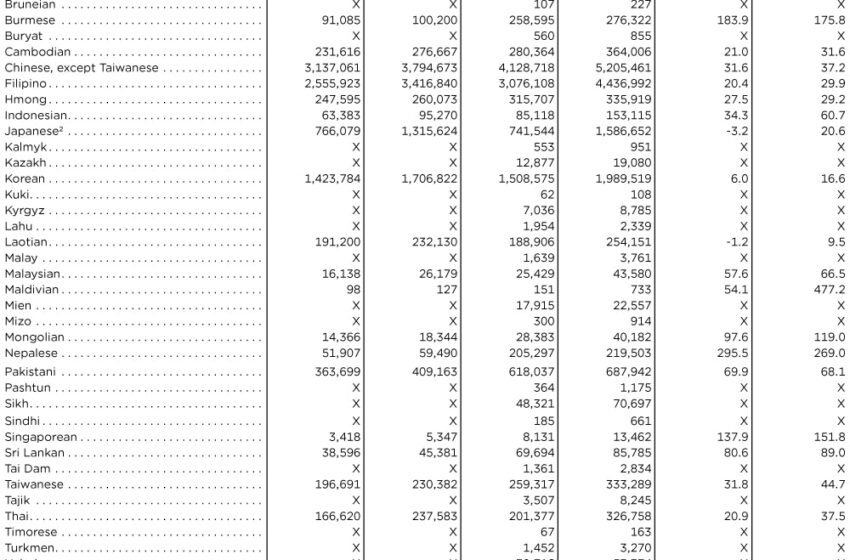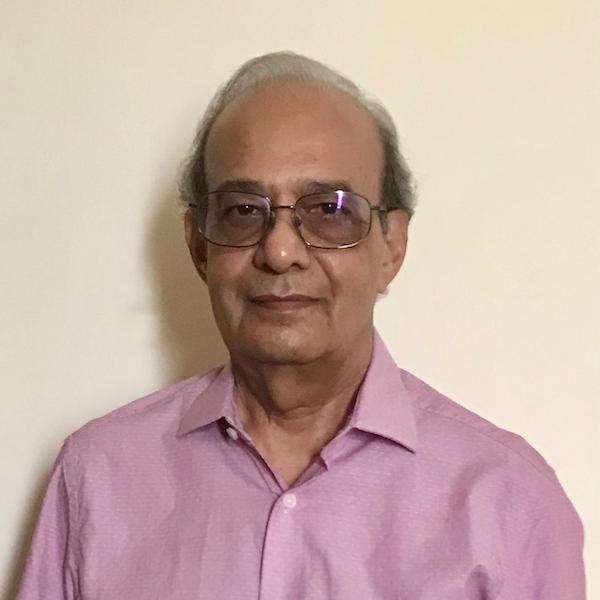Indian Americans become most populous Asian-alone group

Indian Americans have become the most populous Asian-alone group in the United States, growing by over 50% to about 4.4 million in a decade, according to a new Census Bureau.
They have surpassed Chinese Americans, who were previously the largest group in that category. However, the Chinese still make up the most populous Asian alone or in any combination group, except the Taiwanese population with 5.2 million, an increase of 37.2% since 2010.
Where do Indian Americans live? (October 26, 2020)
The Asian Indian alone population increased 54.7% to 4,397,737 between 2010 and 2020 to become the most populous Asian alone group in the nation, according to the report detailing demographic characteristics of 41 Asian groups released Sep. 21.
The Asian Indian alone or in any combination population increased 49.8% to 4,768,846 and was the second largest group in 2020.
Of the six largest detailed Asian-alone or in any combination groups, the largest share of each group (more than 18%) lived in California in 2020.
Texas was the state with the second largest proportions of Asian Indians (10.6%) and Vietnamese (14.2%) alone or in any combination populations in 2020.
Washington became an increasingly popular place of residence and is now in the top five home states for all but the Asian Indian alone or in any combination population.
The Asian Indian population was the largest detailed Asian alone or in any combination group in only one of the 10 counties: Cook County, Illinois (134,169).
“It is momentous,” said Karthick Ramakrishnan, founder of nonprofit group AAPI Data, as cited by NBC News, commenting on the report.
“Americans’ perception of who is Asian is still very much informed by demographic patterns from a century ago. They think of East Asians as quintessentially Asian and are less likely to think of South Asians as Asian … Well, the demographic realities have shifted away from the stereotype.”
The rapid increase in the population can be traced back to the 1990s, when the tech boom coincided with the start of the H1B visa program for high-skill workers, Gaurav Khanna, an assistant professor of economics at the University of California at San Diego, was quoted as saying.
Engineers and computer scientists trained at top schools in India began to immigrate by the thousands with their families, and US tech companies turned their attention to the subcontinent.
Indian Americans view their ancestral homeland favorably: Survey (July 19, 2023)
“At the time, people were talking about who would be feeding this workforce, and a lot of people thought it was going to be China,” Khanna was quoted as saying. “But in India, people are very comfortable with English … it was a British colony, and that matters quite a bit.”
America has also become a very attractive place for South Asian students on F1 and J1 visas looking to enter high-skill fields, he said.
And though there is a burgeoning population of US-born Indian Americans, the vast majority of the population is made of immigrants, according to Census Data. Among H1B petitioners, Indians make up almost 75%. Chinese nationals, the next largest pool of petitioners, make up only 12%.
“People then go from H1Bs to ultimately applying for and getting green cards, even though there are long delays in those processes,” Ramakrishnan said.
With the 2024 presidential election on the horizon, political experts cited by NBC News say it’s a change that is hard to ignore — and one whose impact shouldn’t be underestimated.
“The political parties, when they are looking at Georgia, Virginia, Ohio, Michigan, they need to actually think through, ‘OK, it’s no longer just about Chinese or Koreans. I actually need to have a strategy to actually engage Indian Americans,’” Christine Chen, executive director of civic organization Asian and Pacific Islander American Vote, was quoted as saying.
With a largely English-proficient population, reading and submitting ballots don’t pose barriers to the same degree as with other Asian communities, Chen said. “Not only are they growing in population, but their tendency is to lean in more and participate at a higher rate,” she said.
Political issues important to the diaspora, like discourse around Hindu nationalism and caste oppression, are also making their way into US life, she said. And Indian American figures, like presidential candidates Vivek Ramaswamy and Nikki Haley, are gaining major attention, Khanna was quoted as saying.
“The second generation especially … they’re becoming politically active themselves,” he said.
Ramakrishnan, as cited by NBC News says that, with the recognition of the Census and a new community milestone, both Asian Americans and Americans at large should be paying attention. “My hope is that this will spark important conversations about the role of South Asians in Asian America,” he said.

